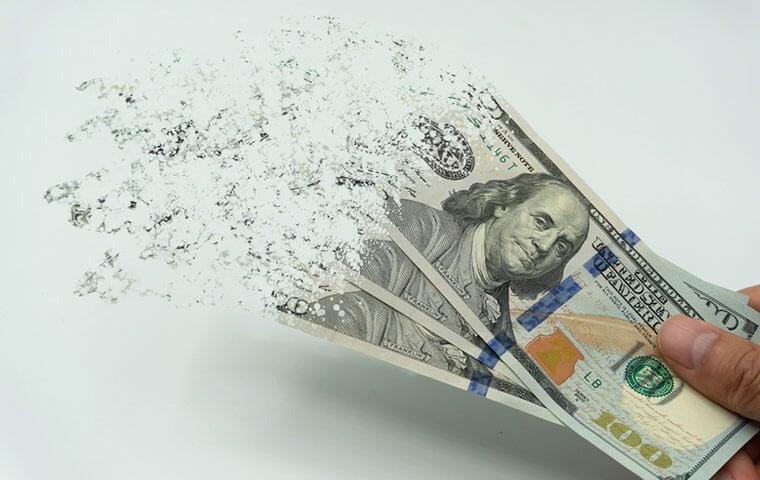 It said that of those with a spending spike, nearly a fifth took out a loan from their retirement savings plan and nearly half increased their credit card debt. Image: evan_huang/Shutterstock.com
By: FEDweek Staff
It said that of those with a spending spike, nearly a fifth took out a loan from their retirement savings plan and nearly half increased their credit card debt. Image: evan_huang/Shutterstock.com
By: FEDweek StaffA study examining the impact of “spending spikes” has found that one common outcome is an erosion in retirement savings.
The study by the Employee Benefit Research Institute defined such a spike as spending in one month of at least 25 percent above the average household expenses over the prior 12 months, and which can’t be funded through average monthly income and readily available savings. Such expenses could occur for example due to a major home or automobile expense or a major vacation, it said.
Such spikes “can be quite large relative to income. While 35 percent of the household observations had spikes of 25 percent or larger, 28 percent had spikes of 50 percent or larger and 22 percent had spikes of 75 percent or larger” within the prior 12 months, it added.
It said that of those with a spending spike, nearly a fifth took out a loan from their retirement savings plan and nearly half increased their credit card debt, compared with less than 10 percent and about a third, respectively, of those without a spending spike in that year. There also was a difference, although a smaller one, in reducing ongoing investments in retirement savings plans, it said.
However, even though it was more common to increase credit card debt than to borrow from retirement savings accounts, an increase in credit card debt also “can have a long-lasting impact on retirement security, since higher credit card utilization is correlated with lower 401(k) plan contributions and account balances, even when controlling for tenure and income.”
“Thus, the availability of emergency savings to cover spending spikes is a critical factor in preventing or stalling a cycle of increasing debt that can significantly impact retirement readiness,” it said.
While the study did not focus specifically on the federal TSP program, its findings regarding 401(k)-type programs would apply there, as well.
5 Steps to Protect Your Federal Job During the Shutdown
Over 30K TSP Accounts Have Crossed the Million Mark in 2025
The Best Ages for Federal Employees to Retire
Best States to Retire for Federal Retirees: 2025
Primer: Early out, buyout, reduction in force (RIF)
See also,
OPM Guidance Addresses Pay Issues arising During, After Shutdown

